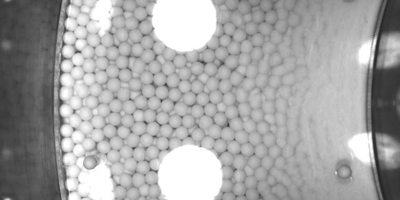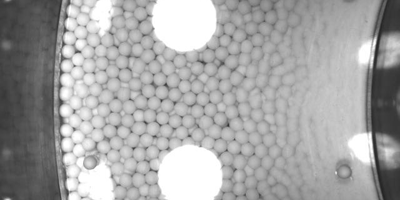Grain Flow Relies on Gravity
Grains, like those in a sand pile, sometimes flow convectively, mixing material between top and bottom. This convection is not driven by temperature gradients (as it often is with fluids), but the actual mechanism is still uncertain. New experiments in a parabolic flight environment show that gravity plays an active part in granular convection by tuning the frictional forces. The authors, reporting in Physical Review Letters, believe a better understanding of gravity’s role in grain mixing could benefit industrial applications, as well as geological studies of low-gravity asteroids.
Many questions remain about how grains flow, for example, in a landslide or a pharmaceutical manufacturing plant. Previous studies have shown that convective flows can form spontaneously in grains and may lead to segregation of particles of different size. Certain theories propose that gravity drives these flows, but experimental evidence has been lacking.
To test gravity’s role, Naomi Murdoch of the Côte d’Azur Observatory in Nice, France, and her colleagues placed a standard grain experiment on an airplane performing parabolic dives and climbs. The effective gravity on board varied from to . The grains ( -millimeter-wide glass beads) were seated inside an annular-shaped container in which the inner wall turned. The rotation exerted a shear force on the grains, causing some to break frictional contact with their neighbors and shuffle their position. The direction of these rearrangements mostly followed the rotation, but when gravity was “on,” the team also observed an inward flow, which they identified as part of a convective loop. This flow turned off when gravity was off. The authors explain that gravity helps drive convection by creating a gradient in the friction exerted on different grains, so that rearrangements occur preferentially near the top surface. – Michael Schirber





